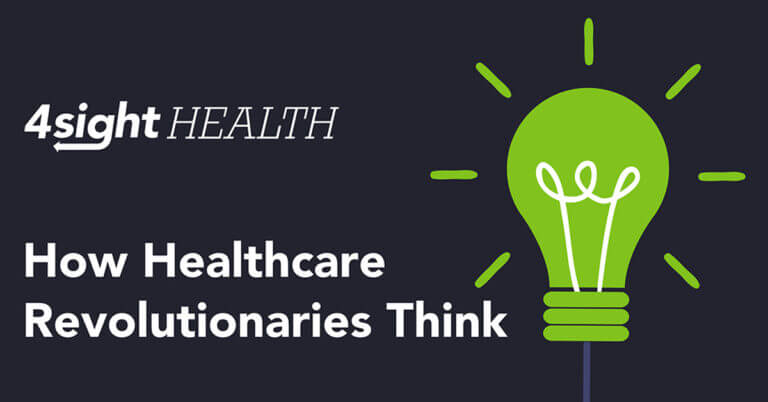April 4, 2023

Confessions of a Former Chief Strategy Officer (Part 2): The Value of Health Must Be Reimagined
Editor’s note: This is Part 2 of a series on strategy in healthcare. Read Part 1 here.
After 30 years of serving in public and private leadership roles, I have learned a lot about healthcare. I wish I could say I contributed a lot, but that would mean I haven’t learned life’s most important lesson: humility.
Of the many things I have learned, the most profound is that the U.S. healthcare system is a mighty institution built on a solid foundation. Yes, it is widely acknowledged that our healthcare system is plagued with high costs, poor outcomes, and limited access to care, yet the institution has survived our third 100-year, global pandemic — a pandemic that took over 1.1 million American lives in less than 36 months.
The stability and simultaneous fragility of our healthcare system have become increasingly more evident as a result of COVID’s impact on the physical health and economic well-being of our nation. Like so many others in the industry, I was convinced that the havoc the pandemic wreaked on our country would surely serve as an impetus for reimagining this industry.
Instead, three years later, health system leaders are working tirelessly to reconstruct the broken pieces of our sick-care system versus throwing them away. Few are working to create a system focused on promoting health, eliminating disease and providing equitable, affordable care.
Despite the loss of life, the increasing morbidity rates and risk of financial ruin, the nation is focused on rebuilding the system that makes money off sickness and saves money when it limits access to medical services. The industry is not reimagining a better healthcare system, as I and many others hoped. The nation just wants to get back to normal.
In an earlier article, I shared a few of my revelations after serving as a Chief Strategy Officer in non-profit healthcare for nearly a decade. I included my strong contention that the system is working exactly as intended by design. Here I share three key insights to inspire the true architects of change — those who will stop rebuilding our sick-care system and channel their energy into creating a solid foundation that supports health, wellness and prosperity for all.
Aim Not Toward Value-Based Care, But Valuing Health
During my years of serving as a Chief Strategy Officer, I heard many sales pitches from companies seeking to sell our health system a value-based-care product or solution. Additionally, I was responsible for developing population health tools, services, and entire business units intended to lower the total cost of care, so our health plan partners could hit their medical loss ratio targets.
In so doing, we worried habitually about the impact of value-based care tools on our business, since the sustainability of the health system depended on hospital revenue, and still depends, on delivering treatment on a transactional basis. In healthcare, we call this the perverse incentive. We talk about making communities healthier, but we make more money when people are ill.
There is no apparent financial ROI associated with health. The current system does not have a means of paying for the prevention of disease, maintenance of health, or the promotion of general well-being. As my father would say when I got stressed or stuck on a problem in school “Girl, you are focused on the wrong thing.” Just like our payment models, wrong focus.
Our current industry focuses on reimbursing providers for high margin, services offered on a transactional basis. The attempts to reimburse or pay in advance for prevention, wellness or primary care have failed. If we truly want to prevent future pandemics from devasting our communities, we need to change our focus. We must build a system that values health and rewards those who enable it. We need to change the market economics by creating new systems and new financial models focused on health improvement and access to care for all.
Calling Patients ‘Consumers’ Does Not Change Behavior or Outcomes
 Consumers and customers are people who make active choices about what to purchase or consume based on need, desire, ability, means and preference. Patients are people who are sick, ill, hurt, or injured and need treatment.
Consumers and customers are people who make active choices about what to purchase or consume based on need, desire, ability, means and preference. Patients are people who are sick, ill, hurt, or injured and need treatment.
According to a 2022 study conducted by AKASA, a leading AI research firm, 64% of “healthcare consumers” indicated that they have never tried to research prices [1]; in essence they haven’t shopped for the most economical or high-value healthcare services. The majority of patients do not have the luxury of shopping for healthcare or medical services, or the knowledge and information to do so. Most people do not want to be sick, let alone pay for care when they do need it. If I have a choice of things to “consume,” services offered by our current sick care system are not anywhere on my list!
Yet the treatment of chronic disease and loss of productivity costs patients, employers and taxpayers over $3.7 trillion dollars a year — approximately one-fifth of the U.S. economy. [2] What if we took just half of this and spent it on preventing disease from happening in the first place?
I believe if we built a system grounded in the maintenance of health, people currently expending their hard-earned resources on sick care and insurance would save money. So would employers and the government. Some of that savings should go to innovative entrepreneurs who have the potential to actually improve the health of our nation.
Healthcare is Not Only Local, It’s Personal and Political
Our individual health status is so personal or private that many healthcare professionals detach themselves from patients by denying their personal or family struggles with sickness.
Physicians are taught to create a professional distance between the system and the patient through the use of noninclusive language, medical terminology and office protocols. Hospitals and clinics develop financial, emotional and physical barriers separating clinicians from patients, especially from marginalized and underserved community members.
The U.S. healthcare system is clearly political. The conflict between the left and the right manifests in the continuous debate over who should pay for the care delivered to the poor, medically needy children, seniors and the uninsured.
There is no political will to make the system work for everyone. If we stopped arguing over who should pay, and focused on what we should pay for, the current benefactors of the sick-care system would lose personal control and political power, completely disrupting the status quo.
We need those who were adversely impacted by COVID, those who desire to live in healthy communities, and those who see the benefit of constructing an accessible, affordable and equitable system to serve as the architects of change. We need to construct a new, radically different healthcare economy that competes with the current system, and perhaps ultimately results in its dismantling.
We Are at a Pivotal Juncture. Let’s Take the High Road.
In conclusion, the U.S. healthcare system is not broken. It is working exactly as intended and designed. Sickness is profitable. Health is not valued. Charity, as opposed to equity is the solution to “helping” the poor, as well as our seniors and children with complex medical needs.
Hospital-based healthcare systems, integrated delivery networks, and even health insurance companies concentrate on maximizing profits by treating the sick. This is how the system was designed. Even nonprofit health systems are laser-focused on margins so they can reinvest in facilities designed to treat more patients while absorbing the costs of caring for uninsured and underinsured patients.
Our nation is at an important crossroads. It is time to create a new solution. We need to create what I like to call the “maximum viable and sustainable product,” or MVSP. The MSVP should help people achieve health, maintain wellness and even avoid sickness in the first place.
To be ready when the next infectious disease attacks our ecosystem, we need an MSVP that rewards the care and payment models that enable disease avoidance and health maintenance with the same ferocity that it now rewards those in the business of treating sickness.
We may not be able to change the current model, but we can create a competing one where health is a core value and the entire community absolutely wants to consume it.





